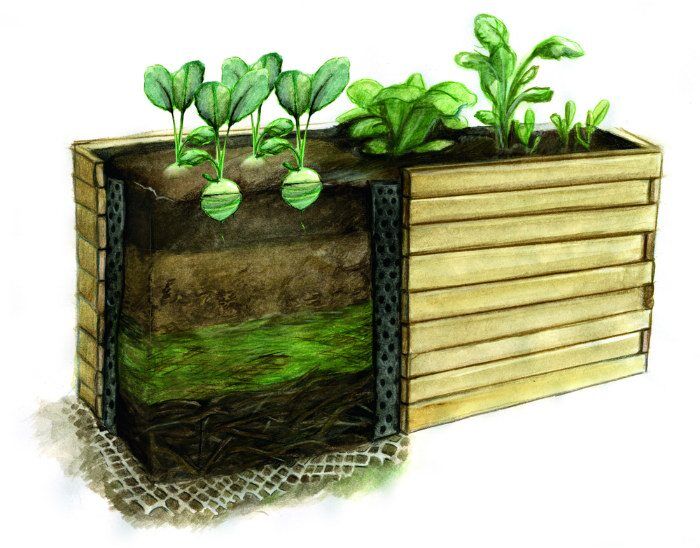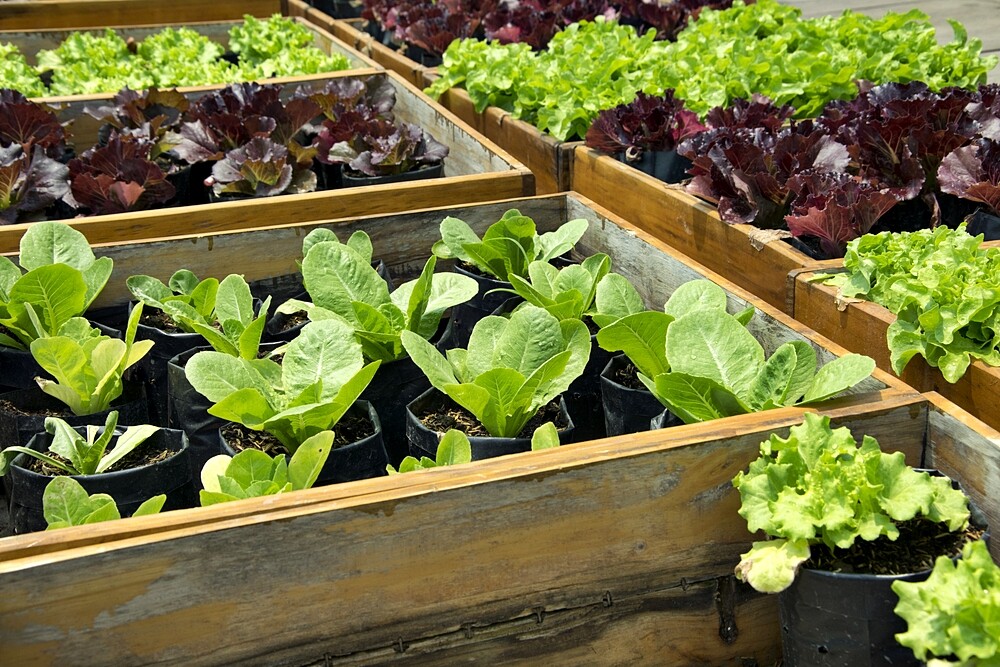In a raised garden bed we can grow our own vegetables, but there are a few things to consider. How to fill a raised bed is explained here.
A raised bed looks beautiful on the balcony or in the garden. But to ensure that vegetables and varieties can thrive in it, a few things should be taken into account when filling it.
Preparations for the raised bed
A raised bed is available in the trade, alternatively it can be built by yourself, it even works with pallets! Instructions can be found on video platforms like YouTube. At the bottom you should attach rabbit wire or a mouse grid to prevent voles from tampering with your bed.
Once you have bought or cobbled together your bed, it should be adequately protected from moisture and humidity before filling. You can achieve this by lining the inside of the bed with a protective cover, for example a pond liner or bubble wrap. Cut this foil with a cutter and adjust it to the dimensions of the bed.
Filling the raised bed: The layers
So before we can plant our vegetables, we first have to work shifts. For the raised bed, four layers are stacked – from bottom to top it looks like this:
- Pruning (about 20 cm high) on the ground: This includes tree, shrub and hedge pruning, such as large branches or twigs
- Leaves or sods (approx. 15 cm)
- Semi-ripe compost (approx. 20 cm): You can use garden or organic waste for this
- Plant substrate (approx. 30 cm): High-quality garden soil for the plants in the top layer
The height data for each layer is for orientation. The height of each layer depends on the raised bed. If this is on the balcony, it will probably be smaller and not as deep as one for the garden, but it is also a wonderful gardening tool.
Distribute the individual layers as evenly as possible, also distribute the upper layer with soil nicely and evenly before you put the plants in.

What are the layers for?
The organic materials in the raised bed decay over time, creating heat that promotes the growth of heat-loving plants. Especially in the first period, the raised bed contains a lot of important nutrients from which cultivated vegetables benefit.
When to fill the raised bed?
The raised bed is filled in autumn at best, so you can also use it as a composter for animal-free kitchen waste and rot through the winter. The slowly progressing decay will cause the raised bed to sink after a while, for some plants this is not wild, others cannot tolerate it. Of course you can also fill your raised bed in spring.
Planting a raised bed
In the first year of your raised bed it is recommended to plant heavy eaters, because they benefit especially from the nutrient-rich filling. Heavy eaters are for example:
- Tomatoes
- Courgette
- Cucumbers
- Peppers
- Cabbage
Then you plant middle eaters like:
- Carrots
- Garlic
- Kohlrabi
- Parsnip
- Fennel
Lastly, it’s the turn of the weak-minded as:
- Peas
- Radishes
- Arugula
- Salads

